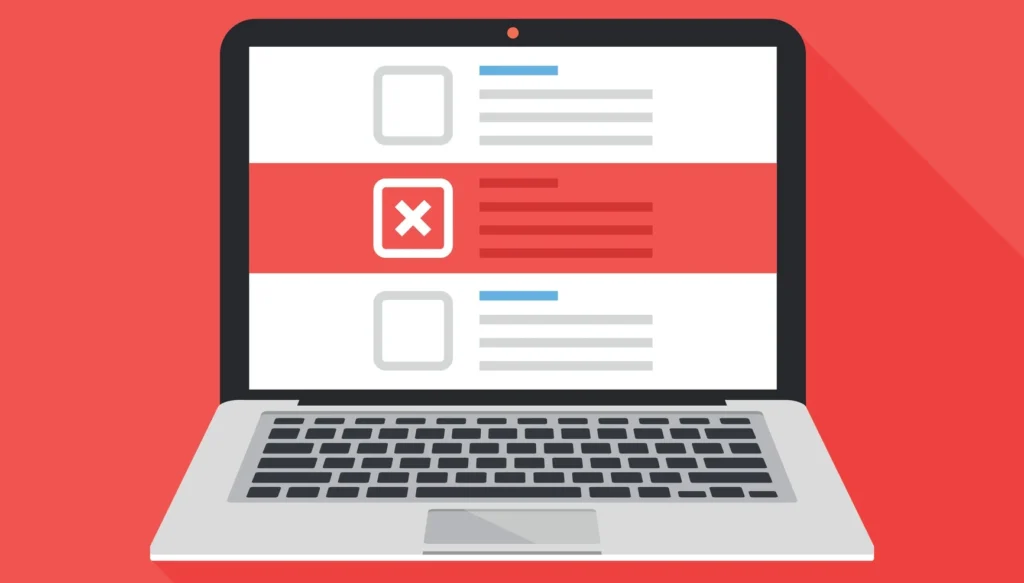10 Common Website Mistakes That Are Driving Customers Away

A poorly managed website can lead to frustrated users, decreased traffic, and lost revenue. Websites are often the first point of interaction between businesses and potential customers. Missteps in design, functionality, and content can quickly discourage users. This article will explore the 10 most common website mistakes that push customers away and how to resolve them.
1. Slow Loading Speeds
Websites that take too long to load frustrate visitors. Studies show users leave a site if it doesn’t load within three seconds. Speed is crucial for user retention and search engine rankings.
Solution: Use tools like Google PageSpeed Insights to analyze your website. Compress images, enable browser caching, and invest in a reliable hosting provider to improve performance.
2. Poor Mobile Compatibility
Many websites fail to adapt to smaller screens. A non-responsive design leads to poor navigation and readability issues, alienating mobile users.
Solution: Use a responsive design framework. Test your website on various devices to ensure consistent functionality and appearance across platforms.
3. Cluttered Layouts
Websites overloaded with text, images, and buttons overwhelm users. This reduces the likelihood of them finding key information quickly.
Solution: Simplify your design. Use whitespace effectively and organize content into clear sections with concise headings.
4. Difficult Navigation
Confusing menus or broken links make it hard for users to explore your site. Visitors often abandon a site when they can’t find what they need.
Solution: Create intuitive menus. Include a search bar and conduct user testing to identify navigation pain points.
5. Missing Contact Information
Failing to provide contact details erodes trust. Visitors who can’t find ways to reach out may question your credibility.
Solution: Display your contact information prominently. Use a dedicated “Contact Us” page with phone numbers, email addresses, and a contact form.
6. Outdated Content
Out-of-date information, broken links, or old blog posts signal neglect and discourage users.
Solution: Regularly audit your content. Update information and remove irrelevant material to maintain accuracy and relevance.
7. Annoying Pop-Ups
Excessive or poorly timed pop-ups disrupt user experience and lead to higher bounce rates.
Solution: Use pop-ups sparingly. Ensure they provide value, such as a discount or subscription offer, and allow users to close them easily.
8. Poor Search Engine Optimization (SEO)
If users can’t find your site on search engines, it reduces organic traffic.
Solution: Optimize content with relevant keywords. Use meta tags, alt text, and descriptive URLs. Regularly update your sitemap.
9. Lack of Security Features
Websites without SSL certificates or visible security measures deter users, especially in e-commerce.
Solution: Install an SSL certificate. Display trust badges and ensure payment gateways are secure.
10. No Clear Call-to-Action (CTA)
Websites without clear CTAs confuse users about the next step.
Solution: Use prominent and direct CTAs like “Buy Now,” “Sign Up,” or “Learn More.” Place them in strategic locations to guide users.
How These Mistakes Impact Your Business
Addressing these errors not only improves user satisfaction but also enhances search rankings and conversion rates. A streamlined, user-friendly website builds trust, encourages engagement, and drives sales.

FAQs
What is the most common website mistake?
Slow loading speeds are the most common mistake, as they lead to high bounce rates and poor user experience.
Why is mobile compatibility important?
Mobile compatibility ensures your site is accessible to users on smartphones and tablets, which account for a large portion of web traffic.
How do I test my website’s speed?
You can use tools like Google PageSpeed Insights, GTmetrix, or Pingdom to analyze your website’s speed and identify issues.
What makes a good CTA?
A good CTA is clear, actionable, and placed prominently. It should align with user intent and guide them to the desired action.
How often should I update website content?
Website content should be reviewed and updated every few months or as new information becomes relevant to maintain accuracy.
What is the benefit of an SSL certificate?
An SSL certificate ensures secure connections, builds trust with users, and improves search engine rankings.
Why are pop-ups considered bad?
Pop-ups can disrupt browsing and irritate users, especially when they appear frequently or are hard to close.